Aspect Ratio is the ratio of a picture's width to its height. NTSC television uses a 4:3 aspect ratio. HDTV and SDTV feature a 16:9 aspect ratio. Movie theaters typically use an aspect ration of 1.85:1 or 2.35:1. Converting a movie to television requires either pan and scan or letterboxing. Pan and scan is a process where technicians remove portions of the left or right side of the video to convert the aspect ratio. Letterboxing is displaying the full picture in the center of the screen, with black bars above Read More
HDMI (High Definition Multimedia Interface)
HDMI stands for High Definition Multimedia Interface. It is a compact 19-pin plug and cable for connecting High-Definition video and multi-channel audio-capable as well as helping to speed the convergence of computer and consumer AV products. High Definition technology or HD has seen a rapid increase in consumer use especially with HDTVs, HD-DVD and Blu-ray players, HD camcorders and other HD components. HDMI was developed by Hitachi, Panasonic, Sony, Toshiba, Philips, Thomson and Silicon Image who came together in a conglomerate effort to simplify the task of connecting and synchronizing Read More
How Plasma TV Works
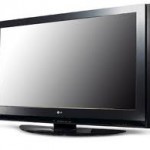
Plasma screens might seem like new technology because of their heightened popularity in recent years. However, plasma screens were first created in 1964, and have been in use ever since. The basic idea behind that of a plasma display is to illuminate tiny colored fluorescent lights to form images. Each pixel is made up of three fluorescent lights — a red light, a green light and a blue light. Just like a CRT television, the plasma display varies the intensities of the different lights to produce a full range of Read More
Speech Synthesis
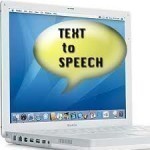
In the modern world of technology and information, no one can afford to not have a voice. Fortunately, through the use of speech synthesis software, users are able to create their own artificial voices and sounds in order to convey messages, express their opinions, and return to being functional members of society. This article will provide an explanation of what speech synthesis software is and will list a number of speech synthesis programs that can be used to create artificial speech. What is Speech Synthesis Speech synthesis is the process Read More
V-Chip
Effective January 1, 2000, the FCC (Federal Communications Commission) required all new TV's (13 inches+) to contain V-Chip technology. V-Chips allow parents to control and block content they do not want their children watching. Virtually all current television programs are given a rating based on a system created by the broadcasting industry. Each rating is V-Chip encoded and allows parents to block specific shows or channels with certain ratings, via TV remote control. If you need assistance in setting up the V-Chip, you will need to contact the manufacturer of Read More
How to Convert WMV to MPEG
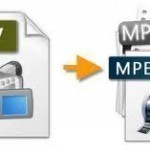
The Windows Media Video or WMV format is defined by and created by the Microsoft Corporation for playing back video content. The WMV format is part of the Windows Media Framework which has been replaced by the Windows Media Foundation with a greater focus on HD content, streaming technologies, and higher audio and video quality. The WMV format is closely related to the AVI format also created by Microsoft, but is smaller in size and considered more suitable for viewing over an Internet connection. A common task that arises for Read More
How to Use Audacity
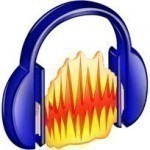
Audacity is a free recording program designed with the user’s needs in mind. Unlike other programs, Audacity includes a wide assortment of tools and features that allow the user to record, manipulate, and share audio files. Audacity creates digital sound files from a number of sources including cassette tapes, vinyl records, minidisks, and even streaming audio with the proper software. Although Audacity can produce CDs and work with a number of audio files, it is first and foremost an audio editing software. Audacity is a completely open source and free Read More
MP4
MP4 or MPEG-4 (Moving Picture Expert Group-4), first published in 1998, was designed to encompass all the features that were part of earlier releases of MPEG files and add a few more that would prove helpful with the advancing online technology of the day. As a standardized group of video and perceptual coding formats, MP in general quickly became a hit with the average Internet user. The introduction of MP4 made it possible for the audience to continue growing by providing quicker, faster, and higher quality broadcast media for the Read More
DiSEqC

DiSEqC stands for Digital Satellite Equipment Control. DiSEqC is a communication bus between satellite receivers and peripheral equipment such a LNBs, switches, and antenna positioners. DiSEqC communication occurs over the existing coaxial cable. Eutelsat developed DiSEqC and released it to the public as an open standard. DiSEqC Specifications Bus Specification Logos and their Conditions of Use Slave Microcontroller Specification Update and Recommendations for Implementation Application Information for using a “PIC” Microcontroller in DiSEqC LNB and Simple Switcher Applications Application Information for Tuner-Receiver/IRDs Application Information for LNBs and Switchers Reset circuits Read More
DMX 512
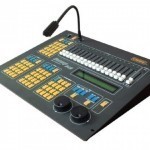
The DMX 512 is a protocol based on RS-485 that is used to control both theatrical stage lighting and effects. The DMX 512 was developed in 1986 and revised in 1990. It is a standard developed by the Engineering Commission of USITT. Today the standard is also known as E1.11 or DMX 512-A. The DMX 512 is a common method for linking controllers and dimmers. It can also control more advanced items such as fixtures, fog machines and moving lights. It should be noted that DMX 512 should not be Read More


Share on: